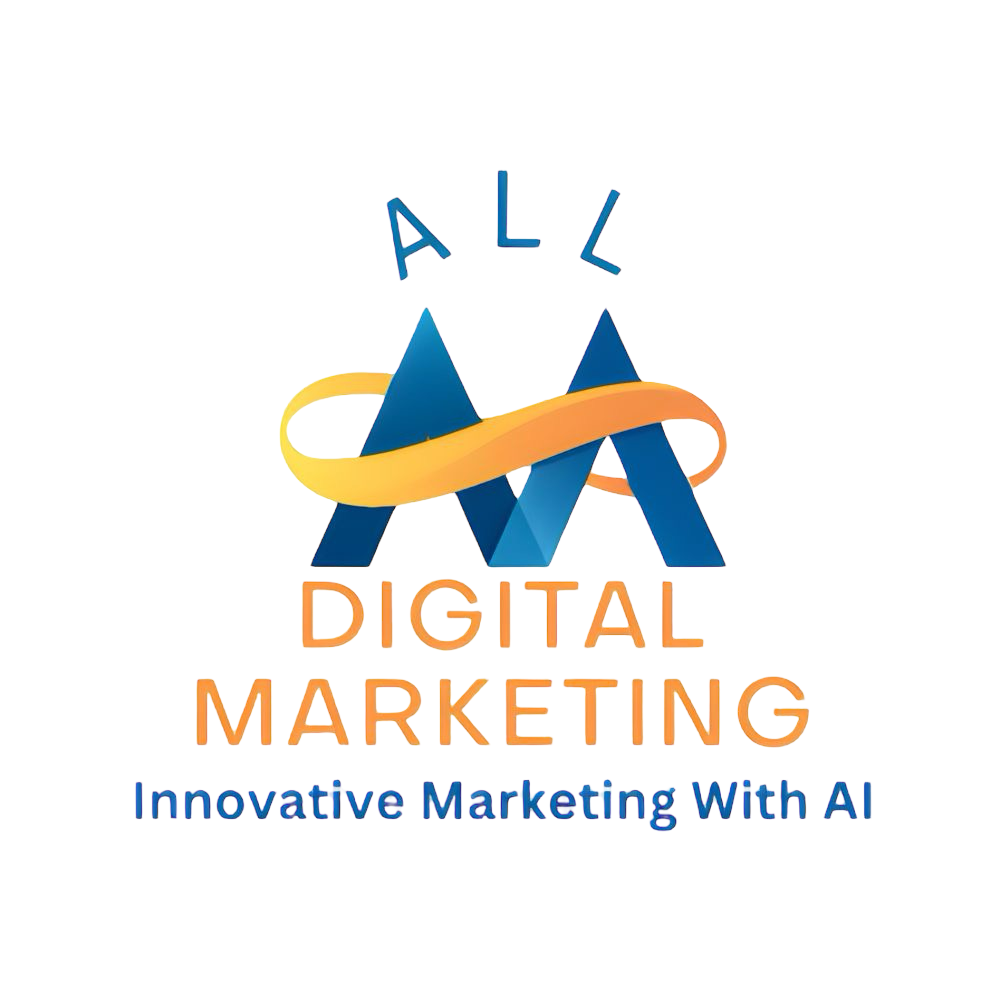Did you know that businesses leveraging AI advertising and advanced ai tools can boost ROI by up to 44% while significantly reducing ad spend? The age of guessing is over—modern brands are using artificial intelligence to outpace, outsmart, and outperform the competition. If you’re ready to leave outdated ad campaigns behind and dominate your market, this guide will reveal the secrets of explosive, AI-powered growth in a language anyone can understand. AI Advertising Transformations: Surprising Facts That Will Change Your Approach AI advertising is redefining how businesses attract, convert, and retain customers. Today’s AI ad platforms offer more than just automation—they provide powerful solutions for creative, targeting, and analytics, often exceeding what traditional marketing strategy can deliver. Marketers who have embraced AI advertising are quickly leaving competitors behind, harnessing smart technologies to fuel lightning-fast campaign optimizations and deliver messages that genuinely connect with each target audience. This section shines a spotlight on why so many brands are moving to AI advertising for their marketing efforts. Whether you’re a small business or an enterprise-level contender, you’ll learn how AI-powered strategies make it easier than ever to reach the right people, customize every ad creative, and turn ad spend into real, measurable results. Get ready to rethink everything you knew about paid advertising and see why AI is the key to your next big campaign breakthrough. 61% of marketers say AI advertising delivers higher ROI than traditional ad campaigns. AI advertising platforms are revolutionizing ad targeting, creative, and analytics. Businesses leveraging AI advertising see up to 44% cost savings on ad spend. Achieve Real Results With AI Advertising: Boost ROI and Maximize Efficiency Brands that invest in AI advertising and cutting-edge ai tech quickly notice the difference in campaign performance. AI ad solutions make it possible to achieve results traditional campaigns can’t replicate. By using advanced ai tool options and innovative ai tech, marketers can create personalized ad creative, automate large-scale optimizations, and effectively engage their target audience . The outcome? Ad campaigns that deliver more leads, lower costs, and a much higher return on every dollar spent. AI-powered advertising removes the guesswork from your marketing strategy by utilizing ai tools that optimize ad creation and targeting. Intelligent systems learn from real interactions, refining creative and targeting with speed and accuracy impossible for human teams alone. Imagine campaigns that automatically improve every day—maximizing efficiency while freeing your team for higher-level strategy. With scalable automation and advanced analytics, even small businesses can win against big-spending competitors. To further refine your AI-powered campaigns, understanding the nuances of audience identification is crucial. Explore actionable techniques for pinpointing and segmenting your ideal customers in this comprehensive guide to mastering the art of identifying your target audience , and discover how precise targeting can amplify your AI advertising results. How AI Ad Solutions Outperform Traditional Marketing Strategy Personalized ad creative at scale Automated campaign optimization using AI tool Improved target audience reach via generative AI "AI advertising is no longer the future—it’s the present reality for brands who want to dominate their market." What sets AI ad solutions apart from yesterday’s methods is their ability to ai generate custom ad variations and update them in real-time. The creation process for ad content is faster, more flexible, and always learning. With machine learning and generative ai , marketers can now deploy content that feels authentically tailored—to every segment, across every channel, in a fraction of the time required by manual efforts. The result: exponential ROI growth, with minimal waste. Critical Components of Successful AI Advertising Campaigns Even with the best ai tools , success in AI advertising doesn’t happen by accident. From the outset, choosing the right AI tool is vital. Look for solutions that fit your ad creation workflow and brand voice, and provide strong analytics so you can track success at every stage. It’s the synergy of the right ai tech with a well-defined marketing strategy that transforms ordinary ad campaigns into ROI powerhouses. Another critical aspect is creative flexibility. Top-performing campaigns rely on AI not just for data crunching, but for unlocking innovative ad creative that resonates across channels—especially in visual mediums like video ads and social media. By integrating advanced algorithms, you create ads that engage your target audience and stay one step ahead of changing market trends. Selecting the Right AI Tool for Your AI Ad Operations The landscape of AI tools is wider than ever. Each platform offers distinct strengths, whether for automating ad creation , generating high-converting ad creative, or supporting advanced analytics. When evaluating options, consider how well each AI tool integrates with your existing platforms, supports campaign objectives, and enables fast, agile decision making. The right tool empowers your entire operation, from creative to conversion. Some key questions to ask: Does the AI platform align with your brand voice? Can it scale as your ad campaigns grow? Is there robust support for audience segmentation and dynamic ad variations? By matching solution features to campaign needs, you ensure lasting results and consistent marketing victories. How AI Tech Enhances Ad Creative and Ad Creation AI tech supercharges the creation process by streamlining every aspect—copywriting, design, and even audience targeting. Tools like ChatGPT and AdCreative.ai enable marketers to effortlessly create ads that are not only on-brand but also tailored for high engagement. These solutions eliminate the bottlenecks of traditional creative teams, allowing for rapid iteration and testing of multiple ad versions. The outcome: compelling ad content that evolves as your target audience does. With AI, you can tap into pre-trained models or let machine learning algorithms analyze past performance data to suggest the best creative strategies. This continuous learning approach ensures your ad creative remains innovative and never stale, giving you a crucial edge in high-competition markets. AI Tool Feature Benefit ChatGPT Creative copy Fast, scalable messaging Jasper Ad variation generation Personalized content AdCreative.ai Automated ad creation Time savings/consistency Maximizing Conversions With AI-Generated Video Ads and Ad Variations AI advertising is profoundly transforming the landscape of video ads and ad variations through ai generate capabilities that produce dynamic content . Advanced AI tech can ai generate endless creative ad content in video format, tailored to various platforms and audiences. Automated editing, scene selection, and optimized messaging ensure that each video ad drives higher engagement, whether in a media post or as part of a wider content marketing strategy. Numerous studies confirm that AI-powered video ads outperform static images, delivering stronger attention and action rates. The secret is personalization at scale—AI-driven technology can analyze millions of interactions and create ad experiences that genuinely connect. If you want to transform impressions into conversions, AI-generated video ads and frequent a/b tested ad variations offer a competitive advantage. Why Video Ad Formats Powered by AI Generate Higher Engagement Today’s buyers crave interaction—and AI tech delivers. AI-powered video ad solutions use data-driven insights to assemble engaging stories and optimize every second for attention. Instead of one-size-fits-all videos, you can now create ads that speak directly to different target audiences or even individuals, ensuring every interaction reflects their interests, behaviors, and preferences. AI-generated video ads are also optimized for different platforms and devices, making them perfect for today’s mobile-first audience. Their flexibility and adaptability mean you get the highest return from every campaign and each social media post, driving conversions where it matters most. A/B Testing Ad Variations for the Best ROI Using AI Advertising A/B testing is the backbone of high-performing campaigns, and AI advertising elevates this process like never before. With automation, you can launch dozens of ad variations simultaneously and let machine learning algorithms optimize for performance in real time. The AI system continuously experiments with creative elements, copy, and targeting criteria, instantly reallocating budget to the best performers. This approach removes human bias, reduces time-to-market, and delivers valuable insights into what resonates with your target audience. The result: consistently optimized ad creative, higher click-through rates, and more conversions at a lower cost per acquisition. Leveraging Generative AI for Powerful, Personalized Google Ads Campaigns Generative AI is revolutionizing Google Ads campaigns by enabling businesses to ai generate tailored messages, images, and ad creative for every micro-segment. Instead of static campaigns, marketers can now deploy multiple ad variations that change in response to customer context, search history, and intent. This level of personalization increases not only engagement but also ROI—as every ad speaks directly to the person who sees it. AI-powered ad creation goes beyond automating copy; it also enables dynamic keyword optimization and advanced targeting. Machine learning algorithms review performance data daily, recommending updates that keep your content relevant and cost-efficient. As a result, businesses running AI advertising through Google Ads discover new growth channels faster and dominate competitive niches. How Generative AI Reshapes Ad Creative for Better Google Ads Targeting Generative AI tools are the engine behind today’s campaign powerhouse. They build on massive datasets and deep analysis of previous ad campaigns to produce original, on-brand ad creative —instantly. Instead of manually revising copy for each new audience, generative AI ensures every google ads impression showcases the best possible creative, optimized for click-through and conversion. This not only accelerates the ad creation process but also ensures ad content remains aligned with your broader content marketing and sales goals. For businesses competing on Google, harnessing generative AI is an essential move to reach (and convert) your ideal target audience . AI-Powered Ad Creation and Dynamic Keyword Optimization With AI, you can automatically generate thousands of keyword variations and optimize ad campaigns on the fly. AI-powered tools track market trends, competitor changes, and audience behaviors, recommending the most effective keyword sets and ad messaging daily. This real-time responsiveness ensures your ads stay relevant, visible, and effective. Better still, these platforms free up valuable time for your team by managing repetitive tasks—so you can focus on creative strategy and higher-level brand positioning. Identify and Reach Your Ideal Target Audience with AI Advertising AI advertising makes it easier than ever to zero in on your target audience —even across complex or highly segmented markets. Advanced ai tech enhances segmentation, analyzes deep behavioral signals, and predicts what types of messages will resonate with specific groups. This means less wasted spend and much higher returns as every ad campaign gets seen by the people most likely to convert. Successful brands no longer rely on generic demographics or outdated audience definitions. Instead, they let AI tools map out hundreds of unique segments, then tailor ad creative to match each one—often unlocking new audiences you’d never find with manual methods. Enhancing Audience Segmentation and Targeting Accuracy With AI Tech AI’s data analysis skills are unmatched. By leveraging massive datasets and sophisticated machine learning algorithms , AI advertising identifies new customer groups, refines target audience criteria, and spots emerging trends. Automated segmentation means your campaigns evolve automatically, adapting to how customers are truly behaving. For marketers, this means unprecedented targeting accuracy. You can be sure each ad creative is not just relevant, but perfectly suited to the wants and needs of your potential buyers. Case Study: Successful AI Advertising Campaigns for Niche Audiences Consider a specialty retailer aiming to increase sales for a unique product line. By deploying ai generated ads, they identified micro-segments previously ignored by broad targeting. With hyper-personalized ad creative powered by AI tools, their campaign reached these niche audiences on social media and display platforms—doubling click-through rates and reducing acquisition costs by 40% within a single quarter. This is just one example. Across B2B, e-commerce, and local brands, AI advertising is unlocking market segments once thought unreachable and transforming ad performance at every stage. Ethical and Legal Considerations in AI Advertising As you scale AI advertising, keeping up with privacy and compliance issues is essential. Regulations like the GDPR and CCPA require careful data management, and an increasing number of platforms now expect strict transparency in ad content and targeting practices. Ethical AI advertising earns trust and avoids the risks of violating core consumer protections. Marketers must also address privacy policy updates and data handling standards, especially when deploying AI tool applications that leverage large data sets. Staying compliant isn’t just a legal responsibility—it’s a competitive advantage, reassuring customers that their data is safe and your brand is trustworthy. Complying With Regulations in AI Generated Ad Campaigns Successful AI ad campaigns always start with compliance as a foundation. This means reviewing regional and industry-specific privacy standards and establishing strict controls around consumer data collection, ad content approval, and reporting. AI solutions should help enforce these standards, flagging potential violations before ads go live. Companies thriving with AI advertising are those who treat ethical marketing as their selling point, not just a hurdle. Being proactive builds both a stronger brand voice and lasting customer loyalty. Ensuring Consumer Privacy in AI Advertising Ensuring consumer privacy is paramount when leveraging AI tools. This entails clear privacy policies, transparent consent mechanisms, and regular reviews of how data powers machine learning and ad target recommendations. Leading brands use AI to enhance—not obscure—privacy, combining detailed audience insights with ethical, user-first approaches. "Ethical AI advertising builds trust and secures long-term brand loyalty." From Concept to Conversion: Building an End-to-End AI Advertising Funnel Optimizing every stage of your marketing funnel is where ai advertising and ai tool solutions truly shine, driving higher conversions and ROI. From attracting leads at the top through search and social media post campaigns to nurturing them with tailored content and follow-up, AI tool solutions help orchestrate seamless, high-converting journeys—at scale and speed. This full-funnel approach is what separates today’s top performers from the rest. By automating lead qualification, personalizing touchpoints, and optimizing every message, AI ensures more prospects convert into customers—resulting in dramatically higher ROI. Integrating AI Ad Solutions at Each Stage of the Funnel Effective integration starts by deploying AI to analyze initial audience behaviors and segment prospects. As leads progress, AI fine-tunes ad creative, personalizes email or social campaigns, and adapts messaging in real time. The result: consistent and compelling experiences that move users from interest to action. With AI orchestrating touchpoints across multiple platforms, your marketing strategy becomes more adaptive and far more efficient—delivering results unreachable by manual workflows alone. Automating Lead Nurturing and Follow-Up With AI Tool Applications Advanced AI tool applications excel at lead nurturing and post-conversion follow-up. From triggered emails to retargeting ad content, AI platforms automate the entire creation process , responding instantly to customer behaviors and feedback. This reduces the risk of lost leads, maximizes conversion rates, and ensures your customers always feel attended to—driving repeat business and deeper brand engagement. Case Studies: Brands Excelling With AI Advertising Real-world success stories prove the power of AI advertising in action. Across multiple industries, businesses are using AI tools not just for incremental improvements, but for breakthrough results. Here’s how top brands are achieving success—whether in retail, e-commerce, or beyond. These examples showcase specific, measurable outcomes: higher engagement, lower costs, and faster campaign rollout. By following their lead, your brand can set a new standard for what’s possible in digital marketing. Retail Success Story: AI Generated Product Campaigns A national retailer used ai generated ads to launch a seasonal product line across multiple social media and display networks. AI tools handled the full ad creation and optimization process—from analyzing trends to building unique creative for each platform. The result: a 60% boost in click-through rates, 35% lower acquisition cost, and rapid brand growth in key markets. E-Commerce Breakthrough: High-Performing AI Ad Orchestration An e-commerce company seeking better conversion rates turned to AI advertising for help. Using AI tools, they launched a/b tested ad variations tailored to each audience segment. Machine learning algorithms rapidly redirected spend to the top performers, resulting in a 47% increase in sales within 30 days and greater brand loyalty among repeat buyers. Watch now: This comprehensive explainer video shows how AI powers multi-format campaigns, boosts engagement, and delivers measurable ROI, featuring animated infographics, real marketer testimonials, and in-depth case study breakdowns. In-Depth Breakdown of AI’s Impact on Multiple Ad Formats AI advertising isn’t just for one platform or medium—it excels across formats. From long-form video ads to display banners, social media post content, and even native search campaigns, AI tech automates, optimizes, and personalizes every aspect. This flexibility drives consistently higher engagement—no matter where your audience is. As the technology advances, expect AI tools to support not only content creation but also smarter spend allocation, better storytelling, and full-funnel attribution that demystifies exactly what’s driving return on investment. See it step-by-step: Follow this generative AI workflow for crafting compelling video ads that grab attention, highlight your unique selling point, and convert viewers into customers. Step-by-step: Generative AI Workflow for Compelling Video Ads Begin with clear objectives and let generative AI analyze your audience and past performance. Next, create ad scripts that reflect your brand voice, then use AI to suggest visuals and dynamic elements that connect with users. Finally, let machine learning optimize edits, scenes, and calls-to-action based on live data, ensuring every video ad delivers its maximum impact. Watch the difference: Real campaign data highlights the dramatic improvement in metrics from AI-powered ad campaigns versus traditional ads. See side-by-side comparisons and discover why AI advertising is a game-changer. Comparing AI Advertising Campaign Metrics vs. Traditional Ads AI-powered ad campaigns consistently outperform traditional marketing strategies by leveraging ai tools for smarter ad creation and real-time optimization. Key metrics—like conversion rates, cost per lead, and engagement time—all improve when AI tools are deployed. Automated optimization cuts wasted ad spend, while real-time analytics reveal exactly which creative and messaging drive action. For brands seeking not just incremental but exponential ROI, the shift to AI advertising is now a must, not a maybe. Expert Tips for Choosing and Implementing AI Advertising Tools With a rapidly growing marketplace of ai tool options, selecting and integrating the right ai tech solution is critical for maximizing your AI advertising success. The best AI advertising tools offer creative flexibility, robust analytics, and seamless integration with your current platforms. Aim for solutions that are scalable—so your ads, and your results, grow as your business does. Consider both your short-term campaign needs and your longer-term growth goals. Choose tools that can adapt to evolving platforms, changing privacy policies, and new audience expectations. The payoff: campaigns that stay ahead of the competition, no matter how fast your industry moves. Evaluating AI Tool Options for Your Marketing Strategy When evaluating AI tools, assess whether the platform aligns with your current workflows, marketing goals, and future plans. Prioritize features like automation capabilities, ad creative support, and cross-platform management. Ask for demos and look for strong user communities to ensure you’re choosing a tool that will support you every step of the way. Integrating AI Tech With Your Existing Ad Platforms Rolling out AI doesn’t mean starting from scratch. The best results often come from integrating AI tech into your existing ad platforms—letting you capture maximum value without disrupting daily operations. Ensure any AI tool you choose has robust APIs and plays well with tools you already trust, such as Google Ads, social media managers, or third-party campaign dashboards. Ensure the AI tool supports your ad creative requirements Check for robust reporting and analytics Choose scalable solutions for future expansion Top AI Tools for Streamlined Ad Creation and Campaign Management Here are some of the leading ai tools for campaign optimization, creative development, and dynamic budget control. Each offers unique benefits for streamlining ad creation and boosting ROI. Solution Key Feature Use Case Jasper Automated copywriting High-volume copy AdCreative.ai Ad variation A/B testing Performance marketing Google Ads Smart Bidding AI-driven budget optimization PPC campaigns Pitfalls to Avoid With AI Advertising Implementation Even the best technology is only effective when used wisely. Too much automation without human oversight can lead to tone-deaf campaigns, compliance risks, or missed creative opportunities. AI tools are incredibly powerful, but successful marketers know when to step in and add a personal touch. Common mistakes include publishing generic, non-personalized ads, ignoring valuable A/B testing, and forgetting to refresh ad content with new creative. Regular reviews and creative updates keep your campaigns effective, relevant, and exciting for your target audience. Over-Reliance on Automation: When to Add Human Oversight Let AI handle the heavy lifting—but always keep a human in the loop to ensure your brand voice and values shine through. Human oversight helps spot awkward messaging, cultural missteps, or missed opportunities that algorithms may overlook. The most successful marketers use AI as an enhancer, never a replacement. Common Ad Creative Mistakes Using AI Tech Writing generic, non-personalized ads Ignoring ad creative testing Failing to regularly update AI-generated ad content Future Trends: Where AI Advertising, AI Tools, and Generative AI Are Headed The future of AI advertising is all about deeper personalization, smarter real-time creative, and immersive, multi-channel experiences. As AI tech and generative ai continue to mature, campaigns will become more responsive and engaging than ever. Expect even more automation behind the scenes—alongside new creative possibilities for marketers who stay ahead of the curve. Emerging trends include hyper-personalized messaging, advanced video ad generation, and campaigns that blend multiple AI technologies for a seamless journey from social media post to conversion. Hyper-Personalization and Real-Time AI Ad Creative Generation The next generation of AI tools deliver customized messages, images, and video ads that update in real-time based on individual user signals and context. This creates truly one-of-a-kind marketing experiences and boosts long-term loyalty. Increased Adoption of Video Ads With Advanced AI Generation As users spend more time on video-centric platforms, AI-powered video ads will become even more central to digital marketing efforts. Expect tools that ai generate content in real time for social, search, and display—matching current events or trending topics for instant relevance. Deeper Integration With Generative AI for Immersive Campaigns Generative AI will soon power immersive content marketing experiences that personalize every touchpoint. Imagine campaigns that adapt not just to your device, but to your voice, interests, or even mood—a new era of marketing strategy is here. "Generative AI is poised to transform how brands communicate, connect, and convert through advertising." Frequently Asked Questions on AI Advertising How is AI used in advertising? Automates ad creation and optimization Improves targeting using data analysis Generates creative assets for different markets Is it legal to use AI for advertising? Yes, provided campaigns comply with data privacy and advertising standards Always adhere to consumer data protection laws Is there an AI that can make ads? AI-driven platforms such as Jasper and AdCreative.ai specialize in automated ad creation Google Ads uses AI for automated bidding and targeting What is an example of AI being used in advertising? Retail brands using generative AI to craft personalized email and display ad campaigns E-commerce stores deploying AI tech to generate dynamic video ads for product launches Ready to Accelerate ROI With AI Advertising? Contact us for a free consultation to see how AI can help your business. Call us at 207-710-1449 to unlock your AI advertising potential today. Start your journey to smarter, faster, and more profitable advertising with AI today. If you’re inspired to take your digital marketing to the next level, consider how a holistic approach can multiply your results. Building an SEO-friendly website that converts is the perfect complement to your AI advertising efforts, ensuring that every click and impression leads to meaningful engagement and sales. Discover proven strategies for optimizing your online presence and driving sustainable growth in this in-depth guide to building an SEO-friendly website that converts . By integrating advanced AI tactics with a high-converting website, you’ll be positioned to capture, nurture, and convert more leads than ever before.

 Add Row
Add Row  Add
Add 








Write A Comment